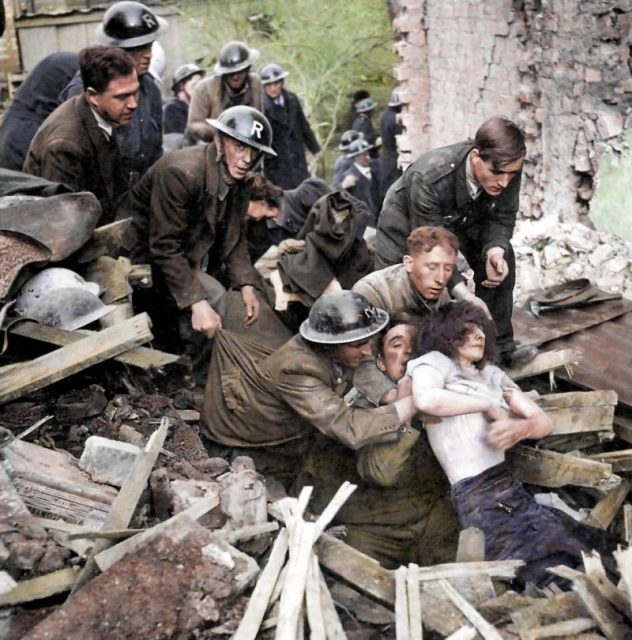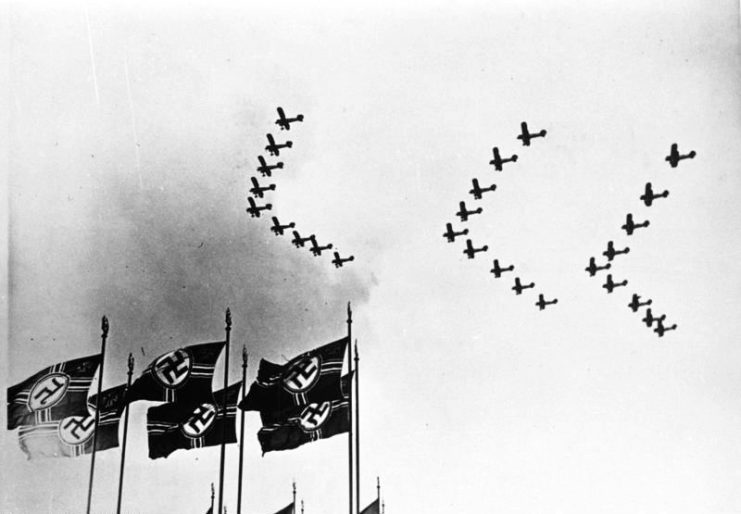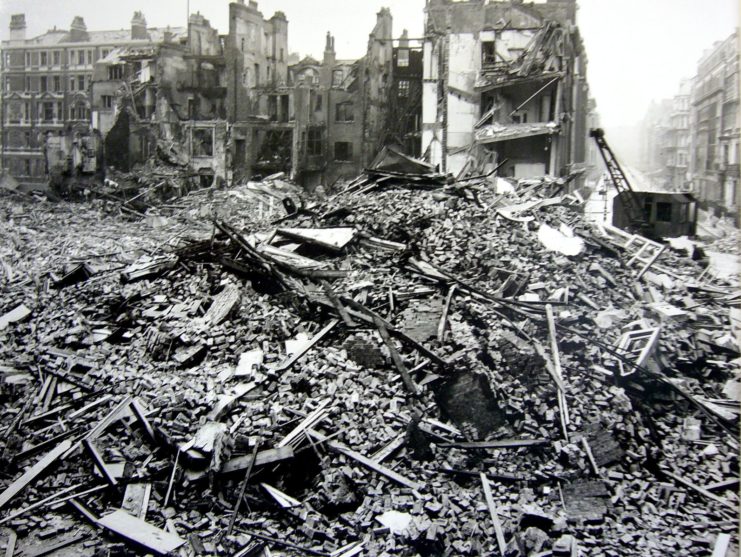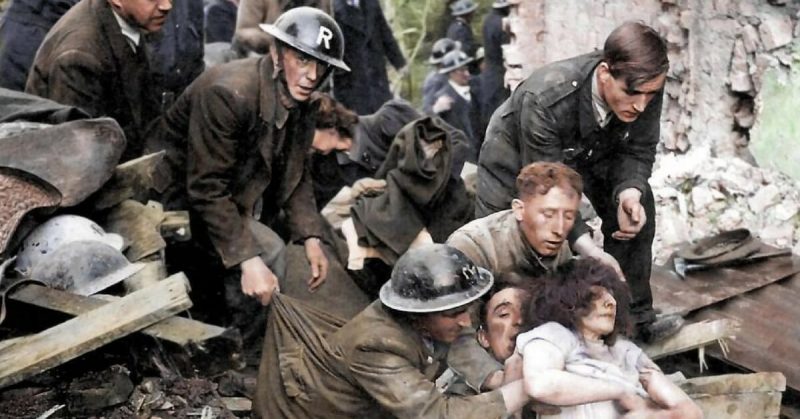No one knew the identity of the young soldier in the photograph that was printed in a magazine in 1995. Last month, a colorized version of the black and white picture was released by Royston Leonard. RAF Engineer John Robbins, who is Albert’s son, saw the photograph and recognized his father immediately. He then realized that the photo had been taken during the rescue operation his father had told him about.
In 1940, several young men were photographed pulling a young woman from the rubble of a bombed air raid shelter in Southampton during WWII. One of the men, Sapper Albert Robbins, was overcome with emotion during the rescue and disappeared for three days.
German bombs had hit the air raid shelter in Southampton. Albert was one of the men who arrived to help rescue any survivors. They pulled the young woman out and then Albert descended into the shelter where he saw hundreds of people in rows. None of them appeared injured. They had all suffocated to death.
While they pulled one of the women out with a rope around her waist attached to a winch, the tension from the line cut her body in two, and her legs fell back into the shelter. At that point, the traumatized young man walked away and was not seen for three days. He has never told anyone what he did during that time. He simply showed up at his parents’ house three days later – unshaven, unwashed and disoriented.
The woman in the photograph has never been identified. No one knows what became of her after being pulled from the shelter.

Albert went on to save dozens of lives as a bomb disposal technician. Almost killed himself, he cheated death time and again while some of his teammates died. In spite of the danger, he successfully worked to clear mines from Worthing Beach in West Sussex. He also defused a bomb at Brighton Pier.
Albert was scheduled to take part in a raid on the Norwegian coast, but his appendix burst before the attack. A bulldozer bomb killed his replacement.
After the war, Albert worked as an engineer. He died at the age of 60 in 1979 due to complications from a heart attack.
Southampton received a lot of attention from German bombers during the war. They were targeted 57 times by the Luftwaffe (German air force) but had over 1,500 alarms. The Air Raid Precaution Department (ARP) estimated that greater than 2,300 bombs were dropped on the area equaling more than 470 tons of explosives. In excess of 30,000 incendiary devices were also deposited on Southampton with almost 45,000 buildings either destroyed or damaged.
It was reported that the glow from Southampton burning could be seen as far away as Cherbourg in France. Germany boasted in their propaganda that they had destroyed the city.

The worst of the raids were on November 23 and 30 and on December 1 and were known as the Southampton Blitz. The worst of the bombing had ended by June 1942, but occasional bombs were dropped throughout July 1943.
In the end, 630 civilians had been killed; 898 received severe injuries, and almost 1,000 sustained minor wounds.

Southampton was the home to the Woolston Supermarine works and docks. They were the reason the Germans focused on Southampton so intensively, but it was the civilians who received the worst of it. The center of the city was changed entirely, and many of its landmarks were destroyed.
In the most tragic of the attacks, a 500-pound bomb made a direct hit on the Arts Block in the Civic Center. A group of children were in the middle of a lesson at the time. Not all the children made it to the shelter in the basement before the bomb hit, but it would not have mattered. The bomb penetrated all the way down into the shelter before detonating, killing all the children but one. Over 30 people, 14 of them children, were killed by that bomb alone.
